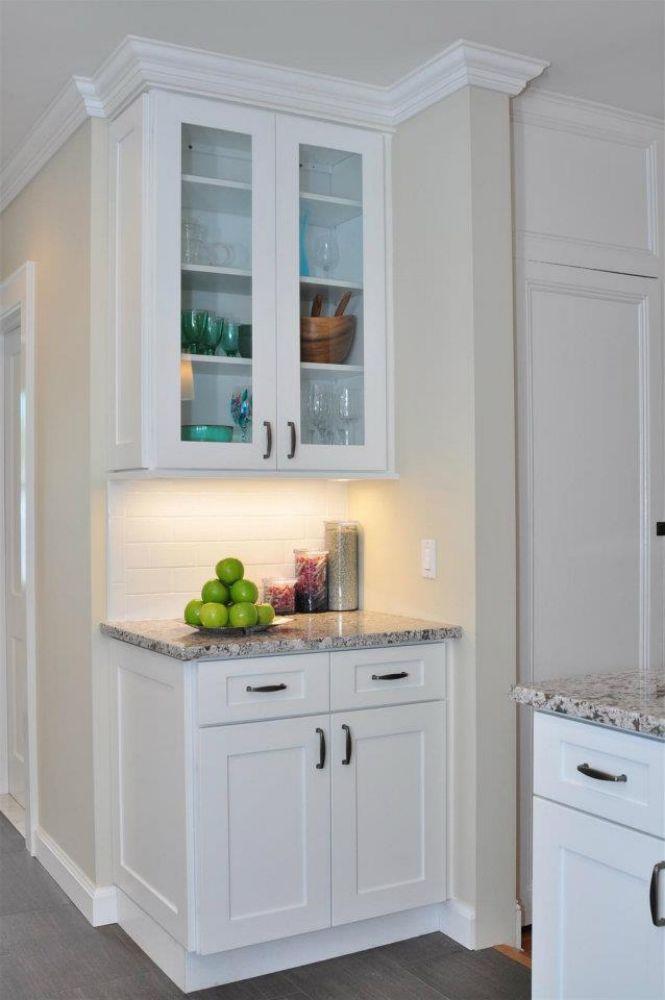Table of Contents
- Introduction
- Utilizing the Latest Wood Cabinetry Technology for Maximum Efficiency
- CNC Machining: Revolutionizing Precision
- Automated Panel Saws: Speeding Up Production
- 3D Design Software: Visualizing Ideas
- Smart Storage Solutions: Optimizing Space
- Integrated Lighting Systems: Enhancing Aesthetics and Functionality
- Automatic Door Mechanisms: Convenience Redefined
- Dovetail Joinery: Timeless Craftsmanship with Modern Precision
- Water-Based Finishes: Environmentally Friendly Excellence
- IoT-Enabled Cabinets: The Future of Connectivity
- Dust Collection Systems: Clean and Safe Workspaces
- Mobile Apps for Project Management: Staying Organized On-the-Go
- Biophilic Design: Embracing Nature
- Hybrid Materials: Exploring New Combinations
- UV Curing Technology: Instant Curing and Enhanced Durability
- Virtual Reality Showrooms: Immersive Experiences
- Collaborative Design Platforms: Co-Creating with Clients
- RFID Technology: Efficient Inventory Management
- Noise Reduction Technology: A Quieter Workspace
- CNC Routers for Carving: Detailed Artistry
- Edgebanding Solutions: Seamless and Durable Finishes
- Laser Measuring Devices: Accurate Measurements Made Easy
- Augmented Reality Assistance: Real-Time Guidance
- AI-Powered Quality Control: Ensuring Perfection
- Heat-Activated Adhesives: Strong Bonds, Less Waiting
- FAQs
- Conclusion
Introduction
Wood cabinetry has been an essential element of interior design and construction for centuries. From classic to contemporary, the charm and versatility of wood make it an ideal choice for kitchens, bathrooms, offices, and various other spaces. In recent years, the woodworking industry has witnessed significant advancements in technology, transforming the way cabinetry is designed, manufactured, and installed. In this comprehensive article, we will explore the latest wood cabinetry technology and how it can maximize efficiency, elevating the quality and precision of cabinetry projects.
Utilizing the Latest Wood Cabinetry Technology for Maximum Efficiency
Woodworking companies have embraced cutting-edge technology to streamline processes, enhance productivity, and deliver superior results. By utilizing the latest wood cabinetry technology for maximum efficiency, craftsmen can achieve exceptional outcomes that exceed client expectations.
CNC Machining: Revolutionizing Precision
CNC machining has revolutionized the woodworking industry, and its impact on cabinetry is profound. CNC machines use advanced software to precisely cut and shape wood, ensuring accuracy down to the smallest detail. This level of precision eliminates human errors and results in seamless joinery and flawless design execution.
Automated Panel Saws: Speeding Up Production
Gone are the days of manual cutting with handheld saws. Automated panel saws have taken over, allowing woodworking professionals to process large quantities of wood quickly and accurately. These machines can handle various materials with ease, minimizing waste and maximizing efficiency in the production process.
3D Design Software: Visualizing Ideas
In the past, creating detailed cabinetry designs required intricate drawings and physical prototypes. However, with 3D design software, artisans can now visualize their ideas in a digital space. This technology enables them to make real-time adjustments, experiment with different configurations, and present lifelike renderings to clients for approval.
Smart Storage Solutions: Optimizing Space
Utilizing smart storage solutions is an excellent way to maximize the efficiency of cabinetry. Incorporating pull-out shelves, custom drawer dividers, and vertical organizers can make the most of every inch of storage space, ensuring functionality and organization in various settings.
Integrated Lighting Systems: Enhancing Aesthetics and Functionality
Integrating lighting into cabinetry not only adds an aesthetic appeal but also enhances functionality. LED lights are commonly used in modern cabinetry to provide soft, ambient illumination, making it easier to find items in cabinets and creating a warm atmosphere in the space.
Automatic Door Mechanisms: Convenience Redefined
Imagine cabinets that open with a gentle push or close silently with a soft touch. Automatic door mechanisms are a prime example of how technology has redefined convenience in cabinetry. These systems offer a touch of luxury while ensuring ease of use in everyday life.
Dovetail Joinery: Timeless Craftsmanship with Modern Precision
Dovetail joinery has been a symbol of craftsmanship for centuries, and it remains relevant in modern cabinetry. With the help of CNC machines, artisans can achieve perfect dovetail joints, combining timeless techniques with the precision of today’s technology.
Water-Based Finishes: Environmentally Friendly Excellence
In the pursuit of eco-friendly practices, many woodworkers have adopted water-based finishes for cabinetry. These finishes produce minimal emissions and volatile organic compounds (VOCs), ensuring a healthier environment for both the craftsmen and the clients.
IoT-Enabled Cabinets: The Future of Connectivity
The Internet of Things (IoT) has penetrated various industries, including cabinetry. IoT-enabled cabinets can offer features like automated inventory management, climate control for delicate items, and even smart access control, adding a futuristic touch to traditional wood cabinetry.
Dust Collection Systems: Clean and Safe Workspaces
Woodworking generates a significant amount of dust, which can pose health risks to craftsmen and compromise the quality of the finished product. Dust collection systems efficiently remove particles from the air, keeping the workspace clean and safe for everyone involved.
Mobile Apps for Project Management: Staying Organized On-the-Go
Mobile apps have become essential tools for project management, even in the world of cabinetry. These apps enable artisans to access design files, track project progress, and communicate with clients and team members seamlessly, making project management efficient and convenient.
Biophilic Design: Embracing Nature
Biophilic design integrates natural elements into indoor spaces, promoting well-being and connection with nature. Wood cabinetry, combined with living greenery and other natural elements, can create a harmonious and visually appealing environment.
Hybrid Materials: Exploring New Combinations
Advancements in wood cabinetry technology have allowed for the exploration of hybrid materials. Combining wood with glass, metal, or other innovative materials opens up a world of design possibilities, resulting in unique and striking cabinetry pieces.
UV Curing Technology: Instant Curing and Enhanced Durability
Traditional wood finishes often require considerable drying time, slowing down the production process. UV curing technology offers instant curing, reducing waiting times and enhancing the durability of the finished cabinetry.
Virtual Reality Showrooms: Immersive Experiences
Virtual reality showrooms are transforming the way customers explore and choose cabinetry for their projects. By wearing VR headsets, clients can virtually walk through showrooms, view different designs, and make informed decisions, all from the comfort of their homes.
Collaborative Design Platforms: Co-Creating with Clients
Collaborative design platforms facilitate seamless communication between woodworkers and clients. These platforms allow clients to provide input, suggest changes, and co-create cabinetry designs, ensuring the final product aligns perfectly with their vision.
RFID Technology: Efficient Inventory Management
Radio-Frequency Identification (RFID) technology has found its way into cabinetry manufacturing to optimize inventory management. RFID tags on materials and products enable quick identification and tracking, minimizing delays and ensuring efficient workflow.
Noise Reduction Technology: A Quieter Workspace
Woodworking can be noisy, but noise reduction technology can help minimize distractions and provide a quieter, more focused workspace. This technology employs sound-absorbing materials and strategic design to create a more comfortable environment for craftsmen.
CNC Routers for Carving: Detailed Artistry
CNC routers are not only suitable for precise cuts but also for intricate carving. With the right software and tooling, woodworkers can create stunning designs and patterns, adding a touch of artistry to their cabinetry projects.
Edgebanding Solutions: Seamless and Durable Finishes
Edgebanding solutions offer a seamless and durable finish to cabinetry. They cover the exposed edges of the wood, providing protection against wear and tear while enhancing the overall aesthetics.
Laser Measuring Devices: Accurate Measurements Made Easy
Accurate measurements are crucial in cabinetry projects, and laser measuring devices simplify the process significantly. These devices allow craftsmen to take precise measurements quickly, reducing the chances of errors and ensuring a perfect fit.
Augmented Reality Assistance: Real-Time Guidance
Augmented reality assistance takes cabinetry installation to the next level. Craftsmen can use AR overlays to receive real-time guidance during installation, reducing the need for physical templates and enhancing accuracy.
AI-Powered Quality Control: Ensuring Perfection
Artificial Intelligence (AI) is now being used for quality control in cabinetry manufacturing. AI-powered systems can detect defects, imperfections, and inconsistencies, ensuring that only flawless products reach customers.
Heat-Activated Adhesives: Strong Bonds, Less Waiting
Heat-activated adhesives are becoming popular choices in cabinetry assembly. These adhesives bond quickly when heated, reducing waiting times and speeding up the production process.
See: Forevermark Cabinets
FAQs
Q: What are the main benefits of using CNC machines in cabinetry?
CNC machines offer precise cuts and shapes, reducing human errors and ensuring seamless joinery. They speed up production and allow for intricate designs, enhancing the overall quality of cabinetry projects.
Q: How can IoT-enabled cabinets enhance cabinetry functionality?
IoT-enabled cabinets can offer automated inventory management, climate control, and smart access features, making cabinetry more convenient and futuristic.
Q: Are water-based finishes as durable as traditional finishes?
Yes, water-based finishes are as durable as traditional finishes and offer the added benefit of being eco-friendly with low VOC emissions.
Q: What is biophilic design, and how does it relate to wood cabinetry?
Biophilic design incorporates natural elements into indoor spaces to promote well-being and connection with nature. Wood cabinetry, when combined with living greenery, aligns with this design concept, creating a harmonious environment.
Q: How can RFID technology optimize cabinetry manufacturing?
RFID technology enables efficient inventory management, allowing woodworkers to quickly identify and track materials, reducing delays and optimizing workflow.
Q: What are the advantages of using augmented reality assistance during installation?
Augmented reality assistance provides real-time guidance, reducing the need for physical templates and improving installation accuracy.
Conclusion
Utilizing the latest wood cabinetry technology for maximum efficiency opens up new possibilities in design, precision, and functionality. From CNC machining and automated panel saws to IoT-enabled cabinets and AI-powered quality control, the woodworking industry continues to embrace innovation and craftsmanship. By integrating these advancements into their processes, woodworkers can create stunning, sustainable, and highly functional cabinetry that stands the test of time.
Read: Expert Strategies for Maximizing Efficiency with Wood Cabinetry
Read: Choosing the Best Wood Cabinetry to Optimize Efficiency


